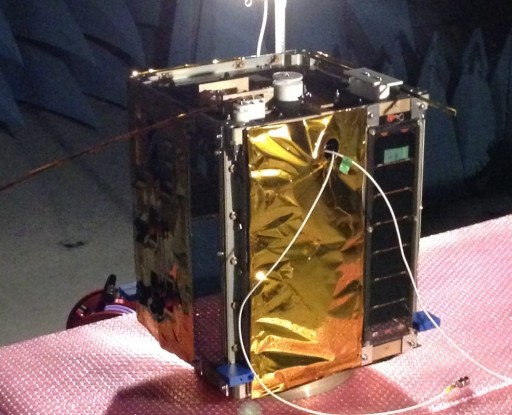TeikyoSat-3

Teikyosat-3 is a project of Teikyo University dedicated to a biological experiment studying the effect of the space environment on slime mold. The 20-Kilogram satellite hosts a pressurized capsule that holds a sample of a mold called Dictyostelium discoideum to expose it to the radiation and microgravity environment in Low Earth Orbit. The species belongs to the phylum Mycetoza and is commonly called slime mold. It has often been used as a model organism and its behavior on Earth is well understood.
Teikyosat-3 is equipped with body mounted solar cells, a power distribution system, attitude determination and control systems as well as a communications system and the sample facility. To allow the mold to survive in space, the sample chamber is pressurized and uses a thermal control system to keep the interior at a temperature that the mold can tolerate. The sample is studied via imagers including microscopic cameras that return photos of the mold. The images are downlinked via 430MHz UHF downlink. A dedicated ground station at Teikyo university is used for imagery downlink and command uplink that is done via VHF. Amateur radio operators have also been asked to track the satellite and receive images of the payload as well as housekeeping telemetry through the UHF link.
Data and imagery will be published to the web to allow students and other scientists to access the unique data this mission will provide.
